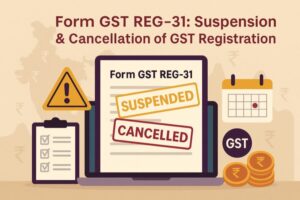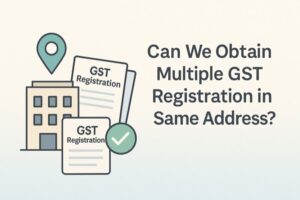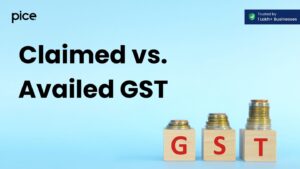Deemed Exports under GST: All There is to Know
- 8 Aug 24
- 13 mins

Deemed Exports under GST: All There is to Know
Key Takeaways
- Deemed exports under GST are special transactions within India that are treated as exports for tax purposes, allowing suppliers to claim a refund of the GST paid on inputs used in manufacturing these goods.
- Unlike traditional exports, deemed exports do not involve the physical movement of goods out of the country, yet they offer similar tax benefits to encourage domestic manufacturing and exports.
- Businesses engaged in deemed exports must adhere to specific documentation and compliance requirements, including meticulous record-keeping and accurate reporting in GST returns to avail of tax benefits.
- The refund mechanism for GST paid on deemed exports is designed to enhance the competitiveness of domestic goods by alleviating the tax burden on suppliers, thereby supporting India's export activities indirectly.
- Understanding the distinction between zero-rated supplies, deemed exports, and merchant exports is crucial for businesses to navigate the GST framework effectively and maximize their tax advantages.
Meaning of Import and Export of Goods under GST
Under Central tax, imports and export supplies have specific definitions that align with international trade practices. An import of goods or services occurs when there is a cross-border transaction that results in the entry of goods or services into India. An export is when goods or services are sent from India to another country. Both these transactions are subject to GST, with exports being zero-rated, allowing exporters to claim refund of tax paid.
Difference between Exports and Deemed Exports
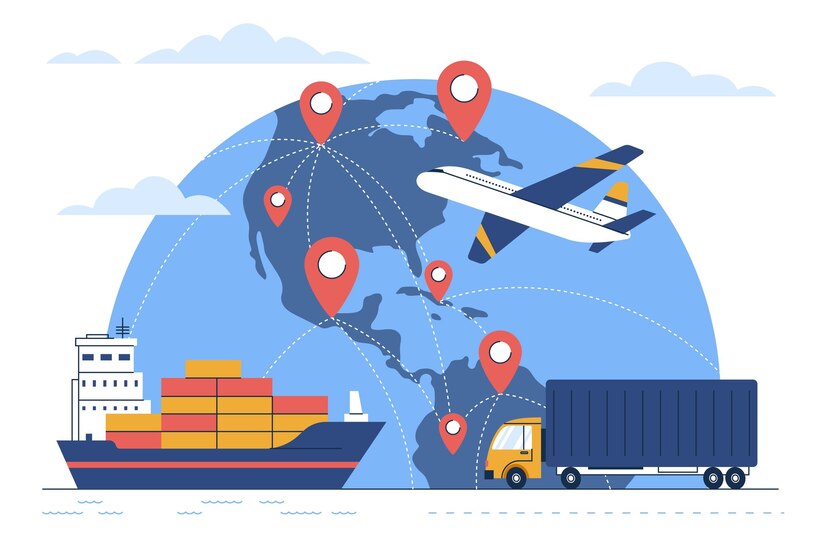
While export of service and supplies is straightforward, deemed exports are a unique category under GST. Not like regular export supplies, deemed exports does not leave the country. They are supplies made within India but are considered exports for GST purposes.
The criteria for a transaction to be considered a deemed export is laid out in the GST laws, and these transactions are eligible for certain tax benefits, similar to those of actual exports.
Taxability of deemed exports under GST
What categories of transactions qualify as deemed exports?
Several categories of transactions qualify as deemed exports under GST, including:
- Supply of goods by a registered person against Advance Authorisation.
- Supply of capital goods by a registered person against Export Promotion Capital Goods Authorisation.
- Supply of goods by a registered person to Export Oriented Units (EOUs) or Software Technology Parks (STPs).
- Supply of gold by a bank or Public Sector Undertaking against Advance Authorisation.
Implications of Deemed Export under GST
Financial Implications
1. Refund of Input Tax Credit (ITC): Eligibility for an input tax credit refund is among the most noteworthy financial ramifications associated with presumed export supplies. Suppliers of deemed export goods are eligible to receive a GST refund on commodities utilized in the production or processing of said goods. This provision facilitates the reduction of products sold costs, consequently enhancing the competitiveness of pricing for deemed exports within the domestic market.
2. Cash Flow Management: Suppliers of considered exports benefit from the ability to receive a tax refund. However, the process of obtaining this refund requires bureaucratic procedures that may result in temporary cash flow difficulties while the refund is processed. Efficient cash flow management and planning are critical for organizations involved in considered exports.
Operational Implications
1. Compliance and Documentation: Deemed export supplies under GST necessitate thorough documentation, including precise declarations and certifications from the recipient of goods indicating that these supplies are for approved use. The supplier must keep detailed records of tax invoices, shipping bills, and GST returns to appropriately reflect these transactions. This added paperwork can add to the operational load for firms.
2. Supply Chain Optimization: Businesses may need to reevaluate and optimize their supply chains in order to efficiently accommodate considered exports. Because the benefits of presumed exports are based on meeting specified conditions, businesses may need to align their procurement, production, and supply systems to maximize tax benefits while minimizing expenses.
Compliance Implications
1. Reporting Requirements: Merchants making considered export supplies must declare these transactions in their GST forms, specifically GSTR-1 and GSTR-3B. Accurate reporting is essential for seeking a refund of tax paid. Any inaccuracies in reporting can result in delays in refund processing or possibly penalties for noncompliance.
2. Refund Claim Process: Claiming reimbursements for considered exports is a rigorous process that must conform to specific dates and processes. Businesses must be familiar with the refund application process, including the documentation required and the submission deadlines, in order to obtain their reimbursements without needless delays.

Legal Implications
1. Regulatory Scrutiny: Tax officials scrutinize transactions classified as presumed exports to verify that businesses comply with GST laws and regulations. Businesses that engage in considered exports must ensure that their transactions fit all of the deemed export standards in order to prevent legal objections or conflicts.
2. Changes in GST Law: Economic policies and tax reforms may cause changes to the GST legislation and rules governing considered exports. Traders must stay up to date on legal developments in order to maintain business compliance and adjust their operations to any new requirements or benefits that may emerge.
Refund of GST paid on deemed exports: Procedure

Here’s a step-by-step guide on how to claim a refund of GST paid on deemed exports:
Step 1: Eligibility for Refund: Businesses must ascertain that their supply qualifies as deemed exports under the GST law. The criteria for deemed exports include supplies made to Export Oriented Units (EOUs), supplies against Advance Authorisation, supplies to projects funded by international agencies, among others specified by the GST council.
Step 2: Documentation: Prepare the necessary documentation required for filing the refund claim. This includes:
- GST invoices for the supply of goods or services.
- Proof of receipt of goods or services by the recipient.
- A declaration from the recipient that the goods or services have been received and that they will not claim the input tax credit (ITC).
- Any other documents specified by the GST regulations or required by the GST portal.
Step 3: Filing the Refund Application: The refund application must be filed electronically on the GST portal. The application for refund is to be made using the form RFD-01 or RFD-01A, as applicable. The form should be accurately filled out, providing all necessary details regarding the deemed exports and the amount of refund claimed.
Step 4: Document Submission: Along with the electronic submission, the required documents must be uploaded to the GST portal or submitted to the GST department, as specified in the GST refund process. Ensure that all documents are complete and correctly uploaded to avoid any delays or rejections of the refund claim.
Step 5: Processing of Refund Application: Upon submission, the GST department will process the refund application. This involves verification of the documents and the details provided in the application. The department may ask for additional documents or clarification if needed.
Step 6: Provisional Refund (if applicable): For deemed exports, the GST law provides for a provisional refund of 90% of the total refund amount within 7 days of acknowledgment of the refund application, subject to certain conditions. This is to help businesses manage their cash flows effectively.
Step 7: Final Settlement: After the verification process is complete, if the refund claim is accepted, the final settlement is made for the remaining amount (if provisional refund was granted) or the total refund amount. The refund is credited to the bank account of the applicant as registered on the GST portal.
You can now pay your GST with your credit card through Pice. Pice is a one stop Business App that allows you to do all business transaction.
Reporting requirements in GSTR – 1 and GSTR – 3B
Reporting requirements for GST, specifically for GSTR-1 and GSTR-3B, are crucial for compliance and accurate tax filing under the Goods and Services Tax (GST) regime in India. GSTR-1 is a monthly or quarterly return that summarizes all outward supplies of goods and services, while GSTR-3B is a monthly summary return that includes details of sales, purchases, input tax credit (ITC) availed, and the payment of tax. Understanding the reporting requirements for these returns is essential for businesses to ensure they remain compliant with GST laws and regulations.
Reporting in GSTR-1
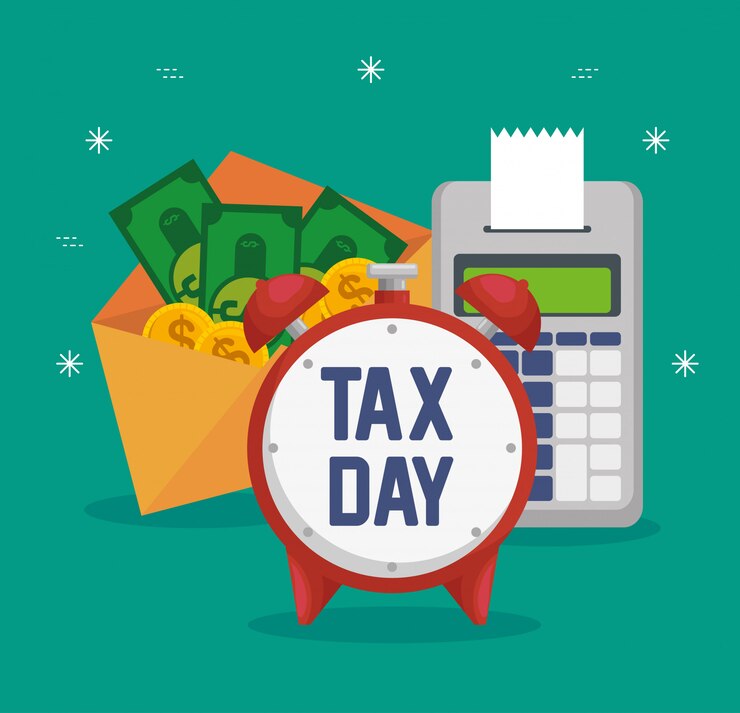
GSTR-1 requires detailed reporting of all outward supplies, and specific sections are relevant to different types of transactions, including deemed exports.
- Invoice-wise Details of Outward Supplies to Registered Persons (B2B): This includes all taxable supplies made to other registered persons, including deemed exports. Each tax invoice needs to be reported separately, with details such as the GSTIN of the recipient, invoice number, date, value, HSN code, tax rate, and tax amount.
- Details of Outward Supplies to Unregistered Persons (B2C): Supplies made to unregistered persons, including exports and deemed exports to entities not registered under GST, are reported here. Large transactions (above a specified threshold) need to be reported invoice-wise, while others can be reported in a consolidated manner.
- Zero-rated Supplies and Deemed Exports: This section specifically requires the reporting of zero-rated supplies, including both direct exports and supplies considered as deemed exports under GST. Details such as the invoice value, tax amount (which would be zero for direct exports but not necessarily for deemed exports), and the relevant shipping bill or bill of export details, if applicable, should be included.
- Changes to Sales Invoices: Any changes to previously reported invoices, including those related to deemed exports, must be reported in this section. This ensures that the GSTN has the most accurate and up-to-date information.
Reporting in GSTR-3B
GSTR-3B is a consolidated return that summarizes GST liabilities and credits for a particular tax period. Here’s how different aspects of transactions, including deemed exports, should be reported:
- Outward Taxable Supplies (Including Zero-rated Supplies): This includes the total value of all outward supplies made during the relevant period, categorized by the GST rate. Zero-rated supplies (exports) are reported separately from other outward supplies.
- Eligible Input Tax Credit (ITC): Businesses need to report the total ITC available on inputs, input services, and capital goods. This includes the ITC availed on purchases intended for making outward supplies, including those classified as deemed exports.
- Details of ITC Reversed and Ineligible ITC: If any input tax credit is not eligible, such as ITC on goods or services used for personal consumption or exempt supplies, it must be reversed and reported here.
- Payment of Tax: After adjusting for available ITC, the net tax liability is calculated, and details of tax payments made (including through utilization of ITC) are reported in this section.
What is Zero Rating?
Zero rating is a concept under GST where exports and certain other supplies are taxed at 0%. This means that while no GST is charged on the final product, the input tax credit (ITC) for taxes paid on inputs used to make such supplies can be claimed by the supplier. This is intended to encourage exports by making them more competitive on the global stage.
How does zero-rating work?
In the context of zero-rated supplies, the supplier can either export without paying any GST on the output (under a Letter of Undertaking) and claim a refund of the ITC or pay the GST on the output and then claim a refund of both the output tax and the ITC. This ensures that the tax cost does not become an export cost, making Indian goods and services more competitive internationally.
How do zero-rated and exempt supplies differ?
The primary difference between zero-rated and exempt supplies lies in the treatment of input tax credit. For zero-rated supplies, the supplier can claim a refund of the ITC, whereas for exempt supplies, no such refund is available. This distinction is crucial for businesses as it affects their tax liability and cash flows.
Deemed exports under GST represent a critical mechanism to support and stimulate India's export activities, even if indirectly. By understanding the nuances of deemed exports, businesses can better navigate GST, ensuring compliance and maximizing their tax benefits.
 By
By 





